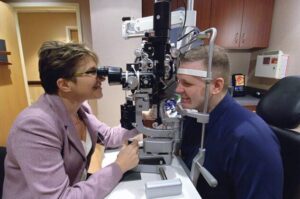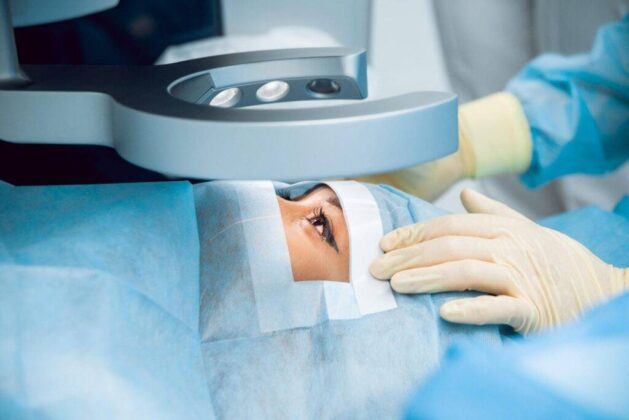Thinking about LASIK to ditch your glasses or contacts? Wavelight InnovEyes LASIK might just be the solution you’re looking for! This advanced procedure uses an upgraded laser system for precise results and faster recovery. So let’s dive in and explore how the surgery works, its benefits, potential risks, and why it could be a great option for you.
Contents
Overview of the Wavelight InnovEyes LASIK
Wavelight InnovEyes LASIK is an advanced vision correction procedure that uses state-of-the-art technology to reshape the cornea and correct refractive errors like myopia (nearsightedness), hyperopia (farsightedness), and astigmatism. Basically, it is an upgraded version of the Contoura Vision with upgrades to the Excimer laser system, offering improved precision and faster results.
The procedure is designed to be highly customized for each patient, thanks to advanced mapping technology that analyzes both the external and internal surfaces of the eye. This allows for a more personalized approach, leading to better visual outcomes and fewer side effects compared to traditional LASIK procedures.
How The Wavelight Innoveye Is Surgery Performed?
InnovEyes LASIK procedure is a precise and step-by-step process that’s designed to provide you with the best possible results. Here’s how it’s performed:
Step 1: Detailed Eye Examination
 Before the surgery even begins, a thorough eye examination is conducted to ensure that you’re a suitable candidate for the procedure. This initial step is crucial as it helps create a personalized treatment plan based on the unique characteristics of your eyes.
Before the surgery even begins, a thorough eye examination is conducted to ensure that you’re a suitable candidate for the procedure. This initial step is crucial as it helps create a personalized treatment plan based on the unique characteristics of your eyes.
During this examination:
Comprehensive Mapping: The doctor will perform detailed mapping of both the corneal surface and the internal optics of your eye. This involves analyzing the front and back of the cornea, as well as the lens and retina, to capture the full picture of your vision.
Assessing Eye Health: Other factors like corneal thickness, pupil size, and eye dryness are also assessed to determine if you’re fit for the procedure.
Creating a Custom Plan: Based on the eye mapping results, the Wavelight InnovEyes system will generate a customized treatment plan that’s tailored specifically to your eyes, ensuring the most precise reshaping of the cornea.
This thorough mapping process is what makes InnovEyes so advanced—by accounting for every detail, it provides a highly personalized treatment to help you achieve clearer, more stable vision.
Step 2: Customized Treatment Planning
 Once the detailed eye examination is complete, the next step is creating a customized treatment plan. This is where the real work of the technology comes into play, ensuring the procedure is highly specific to your eye’s unique needs.
Once the detailed eye examination is complete, the next step is creating a customized treatment plan. This is where the real work of the technology comes into play, ensuring the procedure is highly specific to your eye’s unique needs.
Personalized Data Integration: The data gathered from the eye mapping process—including information about the cornea’s curvature, thickness, and internal optics—are fed into the machine. The system then analyzes this data to generate a personalized treatment plan tailored just for you.
Addressing Both Corneal and Internal Irregularities: Unlike traditional LASIK, InnovEyes works not just on the outer irregularities of the cornea, but also on inner aberrations such as those in the lens and retina. This level of detail allows the procedure to correct visual imperfections more comprehensively, leading to better overall vision quality.
Customizing the Laser Settings: Based on the information gathered, the Excimer laser settings are customized to ensure the most effective reshaping of your cornea. Further, the system uses this personalized data to deliver a treatment that is uniquely suited to your eye’s structure, ensuring a smoother, more precise outcome.
This customized treatment planning is one of the reasons Wavelight LASIK provides more accurate and predictable results, offering better visual outcomes and fewer risks than conventional LASIK methods.
Step 3: Flap Creation in InnovEyes LASIK
 In this step, a flap is created on the surface of the cornea to allow the Excimer laser to reshape the underlying corneal tissue. This can be done in one of two ways:
In this step, a flap is created on the surface of the cornea to allow the Excimer laser to reshape the underlying corneal tissue. This can be done in one of two ways:
Using a Blade (Microkeratome): A thin, precise blade is used to cut a flap on the cornea, which is then lifted to expose the underlying tissue.
Using a Laser (Femtosecond Laser): A more advanced method involves using a femtosecond laser to create a flap with greater precision, ensuring minimal tissue damage and faster recovery.
Once the flap is created, it is gently folded back, allowing the laser to reshape the cornea. The flap is then repositioned once the treatment is complete, and it naturally adheres to the corneal surface without the need for stitches.
Step 4: Laser Reshaping of the Cornea
In this critical step, the excimer laser is used to reshape the cornea, correcting refractive errors.
How it Works: The laser targets the corneal tissue beneath the flap and removes microscopic amounts of tissue to change the shape of the cornea. This allows light to be focused more accurately on the retina, improving vision clarity.
Precision: The InnovEyes system uses advanced software and mapping technology to ensure that the laser reshapes the cornea with the utmost precision, based on the customized treatment plan developed earlier.
Correction of Refractive Errors: By carefully reshaping the cornea, the procedure corrects the way light enters the eye, helping to restore clear vision and reduce or eliminate the need for glasses or contact lenses.
This step is fast, precise, and painless, with most patients experiencing immediate improvement in their vision within 1-2 days.
Why Flapless Procedures Are Better?

While Wavelight InnovEyes LASIK offers great results, some patients and doctors are increasingly opting for flapless procedures like Trans PRK. Here’s why:
No Flap-Related Complications: Flap-based surgeries like InnovEyes can lead to complications such as flap dislocation, epithelial ingrowth, and flap folds, which may require further intervention. Trans PRK, being flapless, eliminates these risks entirely, making it a safer option for many.
Better for Thin Corneas: In patients with thin corneas, flap creation in traditional LASIK can weaken the cornea, increasing the risk of corneal ectasia. Trans-PRK does not require flap creation, making it a better choice for those with thinner corneas.
Faster Recovery and Less Invasive: Flapless procedures like Trans PRK are less invasive, as there is no need for a corneal flap to be created and repositioned. This can lead to a faster recovery time and less post-surgery discomfort.
Reduced Risk of Long-Term Issues: Without the need for a flap, Trans PRK avoids potential long-term issues related to flap displacement or weakening of the cornea. This makes it an ideal option for patients looking for a safer, more stable procedure in the long run.
Due to these advantages, Trans PRK is gaining popularity as a safer and more reliable alternative for those looking for vision correction with fewer risks.
Conclusion
Wavelight InnovEyes, with its customized treatment plan, advanced excimer laser, and high-precision reshaping of the cornea, offers effective results for correcting refractive errors like myopia, hyperopia, and astigmatism.
However, it’s important to consider the potential risks, such as flap-related complications, dry eyes, and glare. InnovEyes is also more suitable for patients with a certain corneal thickness, and some may prefer the flapless procedures like Trans PRK to avoid flap complications altogether.
Ultimately, the decision to choose depends on your eye health, your vision correction needs, and your comfort level with the procedure. If you’re looking for a highly precise, customized treatment and are comfortable with the potential risks, InnovEyes could be a great fit.
Experience the freedom of clear vision with LASIK Surgery at EyeMantra. Book your free appointment now at +91 9711116605!



